In The Dirt: Summer Flowers
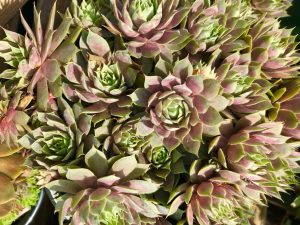
by Ray Greenstreet
The heat is on. Has the strong sun and high temps left your spring flowers looking a little crunchy and wilting too easily? It may be time to refresh those planters with heat- and drought-tolerant varieties. They’ll still need water – every living anything does – but these summer lovers tolerate drier conditions, and for the most part, are low maintenance. With just a little attention, you’ll have vibrant and abundant flowers for the rest of the season.
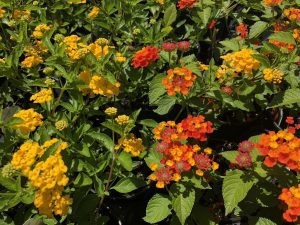
Lantana love the heat, and butterflies love lantana. Great for container gardens or in your flower bed, these workhorses come in a variety of colors and, as an added bonus, are deer-resistant.
It may look dainty, but Angelonia is one tough cookie. Its tall spikes are full of purple, lavender, pink or white flowers. Another great choice for either a container or the garden bed.
Calibrachoa is a great cascading plant that doesn’t need to be dead-headed; the spent flowers simply fall off and new ones bloom in their place. It comes in multiple colors and lives in full sun or partial shade, although the more sun, the better for abundant blooms. And like lantana, it is deer resistant.
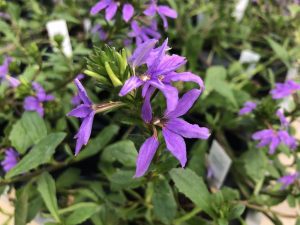
Scaveola is another dependable “spiller” for the container garden. Deep violet flowers bloom with little care.
Sweet potato vine is a great complement to add to a flower box or large pot. Give them room to hang-out; these vines grow very quickly and can easily grow to several feet long.
Geraniums are the classic summer flower. They can take the heat and are forgiving if you skip a watering. Dead-heading encourages flowering, but it is minimal work for a great-looking plant.
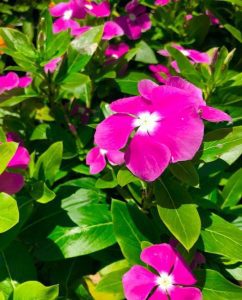
One of the best choices for sunny flower beds is Vinca. It fills out empty spots in the garden with rich green foliage and consistent flowers. Or tuck one in a container to replace a choice that preferred cooler spring conditions.
While most perennials bloom for only a few weeks, there are choices that are dependable bloomers, require little maintenance, and are heat and drought tolerant. They do fine in container gardens, but are at their best in the garden, as they return year after year with very little attention.
Black Eyed Susan’s (Rubeckia goldstrum) and Threadleaf Coreopsis (Coreopsis verticillata) are both North American natives. These super hardy plants are robust growers that tolerate both sandy or clay soils, and thrive in the sunniest of locations with very care.
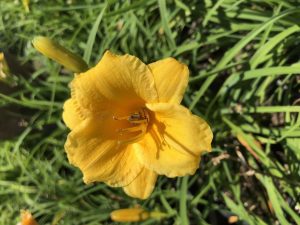
Repeat blooming daylily varieties “Stella d’ Oro,” “Happy Returns,” and “Pardon Me” are compact growers. They grow in clumps, and after a couple of years, appreciate division for the best flowering.
Succulents are very popular, and hardy varieties of sedum are terrific additions to your garden or containers. “Hens-n-Chicks” is one of the best known, but there are taller growing varieties like “Autumn Joy” that not only give a garden texture, they have sweet flowers that attract butterflies in the late summer/early fall. As with all succulents, these plants require very little water.
And for the landscape, nothing beats the spring-to-freeze flowers of “Knock Out” and “Drift” roses. While a “Knock-Out” rose can grow to five feet, the “Drift” rose is low-growing and often used as ground cover is hot, dry locations.
For top performance from any plant, remember to fertilize. Use a time release granular fertilizer like Osmocote when you plant, and then keep up consistent fertilizing with a top quality liquid fertilizer, like Espoma or Nature’s Source. While you’re at it, take a look at your existing landscape. Those heavy late spring/early summer rains depleted the soil of needed nutrients. If your plants are looking a bit anemic (yellow or lackluster growth), they probably need a good feeding. I like Espoma’s line of organic fertilizers like Flower Tone and Plant Tone.
As with any fertilizer, more is not better. A plant will take up only what it needs and the rest is wasted. Always follow the manufacturer’s recommended application rate on the label.




